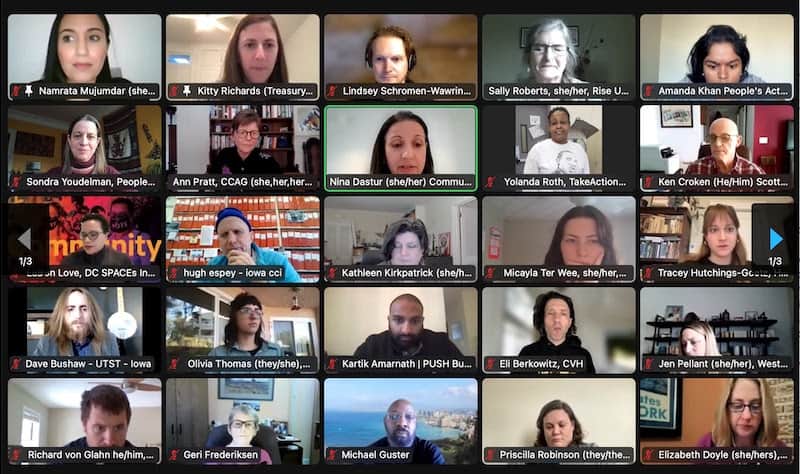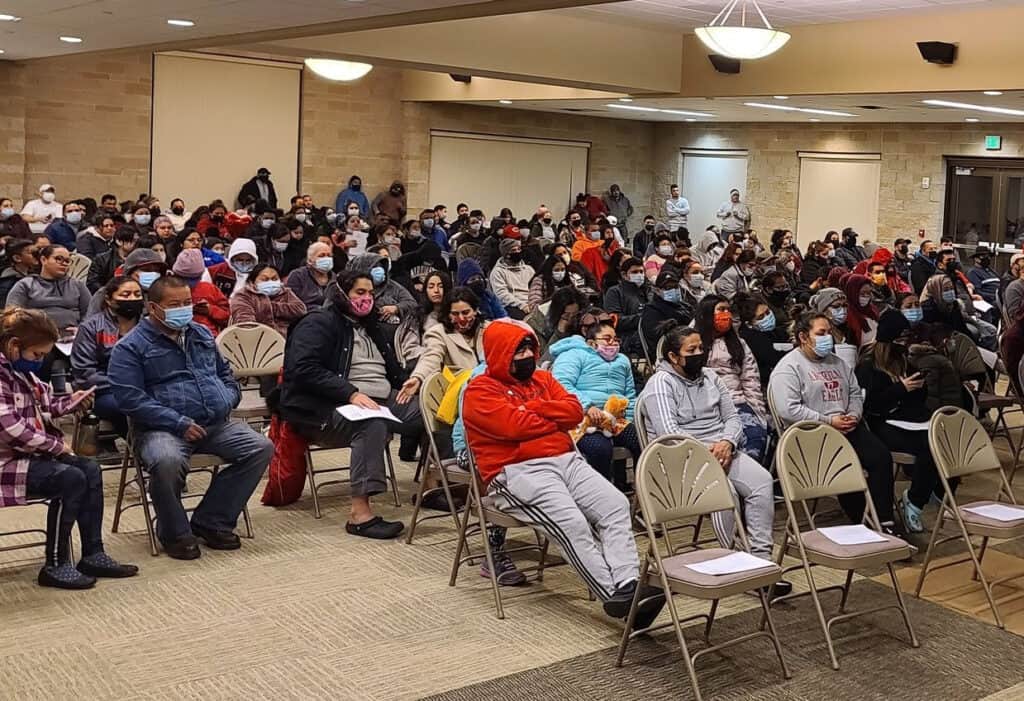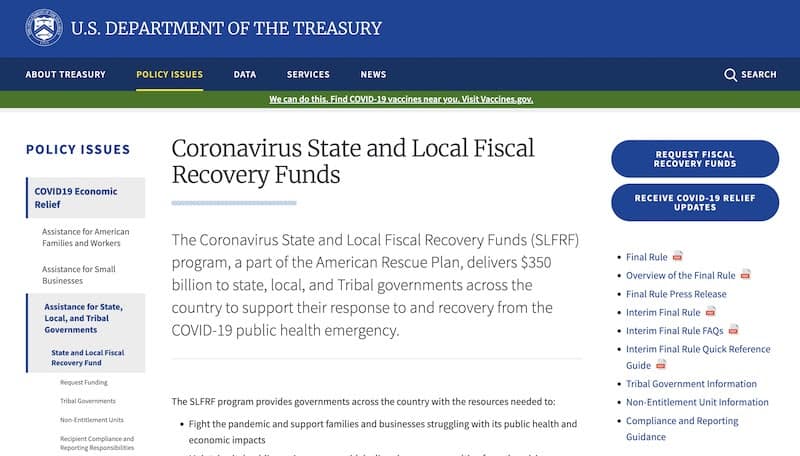President Biden’s Build Back Better agenda may be stalled in Congress, but let’s not forget: the American Rescue Plan, which directs $1.9 trillion towards rebuilding communities, has been signed into law. Now it’s up to us to ensure these funds reach those who need them most.
People’s Action wants to make sure every cent of ARP funds benefit impacted communities: the ARP is a long-overdue down payment on recovery. This money, if spent right, can help lay a new foundation for cities and rural communities hit not only by COVID, but also by decades of neglect and the impacts of structural racism.
That’s why People’s Action member groups have formed a cohort to watch and report on where ARP money goes. And the U.S. Treasury Department has now asked for our help to ensure that it gets to where it needs to go.

After our initial meeting with Treasury officials last October, People’s Action member groups, including Hoosier Action, Take Action Minnesota, Connecticut Citizen Action Group, and West Virginia Rise Up, have met multiple times with Treasury officials, including State and Local Fiscal Recovery Funds (SLFRF) Lead for Policy Outreach Namrata Mujumdar, and Kitty Richards, the Director of the SLFRF Program.
Each time we meet, People’s Action members highlight the need for greater accountability to ensure funds are invested where they are needed most - and for initiatives that make a real difference in people’s lives.
During our most recent meeting with Treasury officials, leaders from the Cohort lifted up key concerns - and recommendations - that would strengthen the impact and efficacy of ARP resources.
Yolanda Roth from Take Action Minnesota lifted up the importance of public engagement and participation, and encouraged the Treasury to provide stronger guidance on best practices for this crucial aspect of the allocation of ARP funds, particularly at the local levels of government.
Kathleen Kirkpatrick from Hometown Action in Alabama highlighted the damaging practices of local officials in her state to obligate funds to projects that do not meet the standards established under the ARP rules and guidelines.
Also, Kathleen emphasized that when states like Alabama try to use ARP funds for projects like building prisons, rather than directing this money towards excluded workers or life-saving harm reduction services, this undermines the support and legitimacy for this program within our communities.
The Treasury has now committed to meet with grassroots leaders like Yolanda and Kathleen on a regular basis, so they can hear unvarnished reports from the ground of what states are - and are not - doing with the ARP recovery funds they receive from the federal government.
We have encouraged them to set up a whistleblower hotline, which they are in the process of setting up and rolling out nationwide. In the meantime, they encourage anyone who is aware of the misuse of ARP funds in their local communities or state to contact them directly.
Yet just as importantly, the Treasury - and we - want to lift up success stories of the ways states are using ARP funds in the right ways, to revitalize their communities. Armed with this knowledge and reports from the field, Treasury can celebrate and share the best practices of states that excel at ARP implementation, and correct those who don’t.

One example of this is in Iowa, where Iowa Citizens for Community Improvement (ICCI) and the Catholic Worker House in Iowa City have been advocating for direct aid to those who were barred from federal COVID relief programs like the CARES Act and Temporary Assistance for Needy Families because of their immigration status.
In January, Treasury policy advisor Namrata Mujumdar responded to a question from Johnson County Supervisor Jon Green to clarify that a proposed fund for excluded workers could proceed, countering the efforts of local county officials to redirect payments primarily to those who had already qualified for relief.
Supervisors ultimately voted to approve a $3.5 million direct assistance program that will deliver $1,400 pandemic relief payments to 2,500 workers. Both undocumented workers and the formerly incarcerated are now eligible for these payments.
This is just one example of how our eyes and ears on the ground can keep local and state officials from using their influence to misdirect ARP funds, and make sure they reach communities in need.
We appreciate the Treasury’s good-faith efforts to ensure that our tax dollars reach those who need them most, and their willingness to work with us so this can happen. Together, we can ensure true accountability - and with it, a true road to recovery.
 Ann Pratt is Senior Campaigns Strategist for People's Action
Ann Pratt is Senior Campaigns Strategist for People's Action


